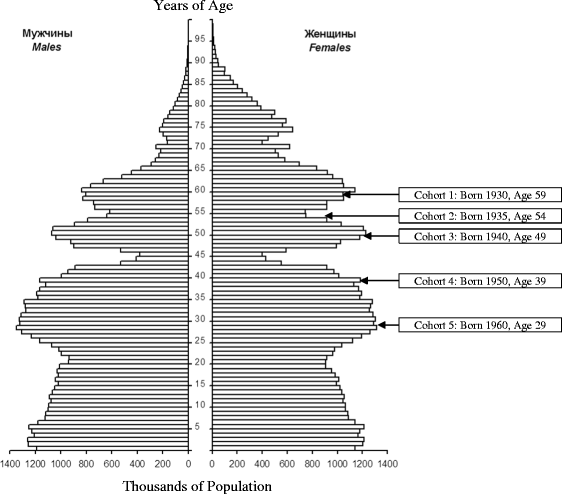Journal of Population Ageing June 2018, Volume 11, Issue 2, pp 153–208| Cite as
The Changing Capabilities of Cohorts of the Elderly in Russia during 1990–2020: Measurement using a Quantitative Index
Russia has had a high elderly share of its population like the OECD countries but has had a more turbulent history over the past 100 years, which has caused fluctuations in the capabilities of those turning 60 (measured by education and training, income, enabling environment, medical care, and health status). This article analyses the life experiences and capabilities of five Russian birth cohorts turning 60 over the period 1990–2020. It presents relevant concepts, reviews past research, and evaluates the importance of health factors (health environment, health-related behaviors, medical care, health status) in determining the activities and contributions of older people in Russia. A Human Capabilities of the Elderly in Russia Index (HCERI) with 22 indicators is developed. Russian data are used in the calculation of the HCERI for the cohorts turning 60 in 1990, 1995, 2000, 2010 and 2020. The article then presents evaluations of the experiences and changes in capabilities for each of the five selected cohorts of the elderly in four periods of life: Childhood (1–15 years), Young Adult (16–49), Mature Adult (50–59), and Early Elderly (60–69). The implications of changes in the characteristics of the elderly for Russian government policies are discussed.
Keywords Elderly Cohorts Capabilities Human capital Russia Quantitative index
The goals of this article are to answer four related questions:
- What is an appropriate multi-dimensional quantitative index to measure the evolution over time of the capabilities of the elderly in Russia?
- Have the population groups entering old age in Russia from 1990 onwards remained impoverished, poorly educated and unhealthy, or have improvements in their capabilities meant that they can provide substantial benefits to the economy and society, as in leading OECD countries?
- How important have health factors (health environment, health-related behaviors, medical care, health status) been in determining the activities and contributions of the elderly in Russia?
- What are the implications of projected population aging and changes in the capabilities of the elderly for the policies of the Russian government out to 2020?
 |
Russia age-gender population pyramid in 1989 and five birth cohorts of the elderly.
The author drew the five cohort boxes.
|
No comments:
Post a Comment